The most famous Armenian tanker. Chief Marshal of the Armored Forces Amazasp Khachaturovich Babajanyan
Hamazasp Khachaturovich Babajanyan was born on February 5 (February 18 in a new style) 1906 was born in the village of Chardakhly in the Elizavetpol province, today it is the territory of the Shamkir region of Azerbaijan. His parents were ordinary peasants. At the same time, the family of the future marshal was the average unit of the Russian Empire society at the beginning of the 20th century, the family had many children, there were 8 children in it at once, they all required care and attention. In order to feed a large family, Amazaspa’s father was almost never at home, as he had to constantly work while her mother was busy with household chores and looking after younger children. At the same time, children in the Babajanyan family began to work early. Hamazasp Babajanyan after graduating from high school 5 classes began to work in his father's household, and then rotten.
It is worth noting that the early start of work and only primary or secondary incomplete education is found in the biographies of many military and simply famous people of that era. For most ordinary people, especially non-urban residents, study at the time was not in the first place. Much more priority was to feed yourself, your family and children. At the same time, Amazasp Babadzhanyan did not just work on the ground, in 1923-1924 he worked on the construction of roads in the territory of today's Shamkir region.
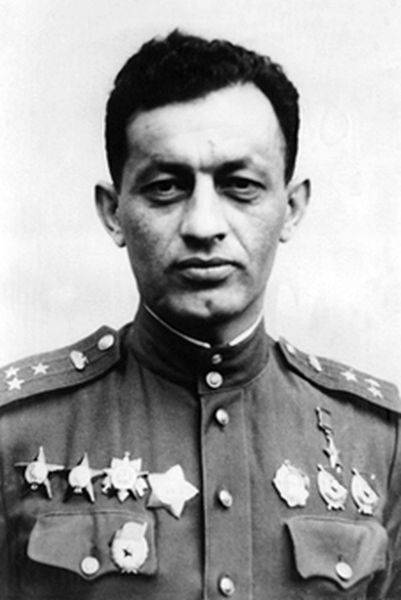
In 1924, the future Marshal of the Soviet Union joined the Komsomol, becoming the first secretary of a rural Komsomol cell. Komsomol in those years gave people more opportunities for their development and self-realization, was one of the steps of the new social elevators. Contemporaries noted that Babadzhanyan was an active Komsomol member who literally gushed forth with various ideas and proposals. It can be said that a young man with an active lifestyle was noticed and in September 1925 was called to the ranks of the Red Army not according to the usual, but according to the Komsomol appeal. According to the distribution, he was sent to study at the Armenian Infantry School, which was located in Yerevan at that time, this is where his brilliant officer career began. In September 1926, after this school was disbanded, it was transferred to the Transcaucasian Military Infantry School, which was located in Tbilisi.
After graduating from the infantry school, Amazasp Babadzhanyan was sent to serve in the 7 Caucasian Rifle Regiment (Caucasian Red Banner Army), where he served as platoon commander, secretary of the party bureau of a separate battalion, company commander. As part of the regiment he took part in battles against bandit groups and participants in anti-Soviet demonstrations, was wounded in one of the battles. Later, his colleagues recalled that Amazasp was a very mobile and enterprising man who did not like to sit on the spot and was constantly engaged in some work. At the same time, it was particularly emphasized that he always treated his subordinates and younger in rank with respect.
In March 1934, Amazasp Babajanyan was transferred to the 3 machine gun regiment, which was stationed in Baku at that time. In the regiment he served as commanders of machine-gun companies and a battalion, as well as an assistant chief of staff of the regiment. In October, 1937 was appointed to the post of chief of the 1 section of the air defense unit of the Transcaucasian Military District in Baku. In August, 1938 was appointed Chief of Staff of the 3 Machine Gun Regiment, and in October of the same year he was transferred to the Leningrad Military District as Assistant Commander of the 2 Machine Gun Regiment. As part of the Leningrad Military District Babadzhanyan took part in the Soviet-Finnish war 1939-1940. During one of the battles that took place on February 18 1940 of the year, the future marshal was wounded for the second time in his life, this wound was not his last.
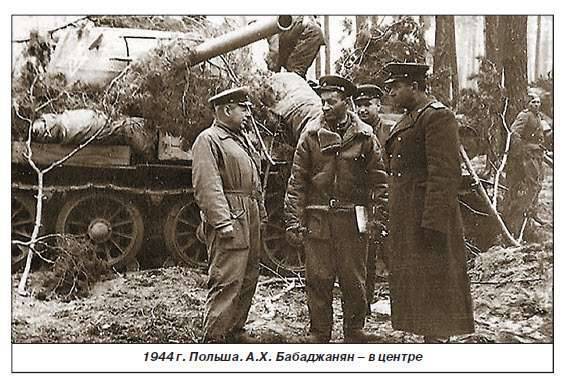
After recovering in December 1940, the officer was appointed deputy commander of the 493 Infantry Regiment, and in January 1941, the deputy commander of the 751 Infantry Regiment, both were located in the North Caucasus Military District. Just before the war in April 1941, Hamazasp Babajanyan was appointed assistant to the chief of the 1 division of the operations department of the 19 army headquarters, located in the Kiev Special Military District.
Since July 1941, Babajanyan took part in the Great Patriotic War, this month his 19-I army arrived on the Western Front, where the situation was very difficult. In August, he became commander of the 395 Infantry Regiment as part of the 127 Infantry Division. He took an active part in the Smolensk defensive battle and Yelninskoy offensive operations. Already 18 September 1941, the 127-th Infantry Division becomes the 2-th Guards, and the regiment, commanded by Amazasp Babadzhanyan, became the 1-th Guards Rifle Regiment.
At the end of September 1941, the guards were incorporated into the operational group of A. N. Yermakov, which was transferred to the eastern Glukhova region, where she led heavy defensive battles against superior enemy forces. October 3 division was redeployed near Kursk, in November part of the division were fierce defensive battles in the area of the city of Tim. In December 1941, the 2-I Guards Rifle Division took part in the Soviet counteroffensive near Moscow, after which it was redeployed to the South-Western Front, and then became part of the Southern Front as part of the 3-th Guards Rifle Division. In March, 1942, units of the division took part in the Soviet offensive against Taganrog.
In April, according to other sources, at the beginning of June 1942, Babajanyan was sent from the front to study. He got to crash courses at the MV Frunze Military Academy, which was evacuated to Tashkent. He studied in Uzbekistan until the end of August 1942, after which he was again sent to the front, where he became commander of the 3rd mechanized brigade, which he headed until September 1944. So the former infantryman suddenly became a tanker. Prior to that, he had to, of course, interact with tanks, but about the structure of military vehicles he had a very distant idea. Therefore, literally immediately after the appointment, he had to stubbornly master new technology. According to his recollections, it took up to 18 hours a day to work. Immediately upon arrival at his mechanized brigade, he called to his deputy for technical affairs and asked him to work with him daily for 5 hours a day, explaining and telling about the structure of tanks and their features. These lessons were not in vain, and soon he proved it in a combat situation. Already in October 1942, the brigade under his leadership received the combat Red Banner. Major General K.F. Telegin, member of the Military Council of the Moscow Defense Zone, personally handed the banner of the unit.
Together with his brigade, Colonel Hamazasp Babajanyan took part in the Battle of Kursk, for which the brigade was represented for the Order of the Red Banner. In October 1943, she received the honorary title of the Guards, becoming the 20-th Guards Mechanized Brigade. Subsequently, the soldiers of this compound took part in the Zhytomyr-Berdichev, Korsun-Shevchenkovsk, Proskurov-Chernivtsi and Lvov-Sandomir offensive operations of the Soviet troops, in which they gained fame for themselves and their commander.
The 20-I Guards Mechanized Brigade of the Colonel Babadzhanyan Guard was particularly distinguished during the Proskurov-Chernivtsi offensive operation. The fighters of the brigade, together with other units of the 1 of the Ukrainian Front, managed to break through the German defenses and from 22 to 24 in March 1944, a number of Right-Bank Ukraine cities were freed from the enemy: Trembovl, Kopychyntsy, Chertkov and Zalishchyky. One of the first units of the front, which forced the Dniester, was the 20-I Guards Mechanized Brigade, whose fighters were able to hold the bridgehead important for the further offensive. Later, the order of the Supreme Commander V.I. Stalin to the brigade of Colonel Babadzhanyan was the assignment of the honorary name “Zalashchitskaya”, and the troops that took part in the liberation of the cities Chertkov and Zalishchyky from the fascists were thanked. In their honor, 24 March 1944, in Moscow, was saluted with 20 artillery shells from 224 guns.
For the skillful leadership of the military operations of the entrusted mechanized brigade, personal courage in the battles and successful crossing of the Dniester by decree of the Presidium of the USSR Armed Forces 26 in April 1944 of the year of the guard, Colonel Hamazasp Babajanyan was awarded the title of Hero of the Soviet Union with the award of the Lenin medal and the “Golden Star”.
The success of the officer was rewarded by the fact that 25 August 1944, he was appointed commander of the 11-th Guards Tank Corps. Commanding the corps, Babadzhanyan took part in the Vistula-Oder and Berlin offensive operations. And again his tank crews could distinguish themselves in battles and cover themselves with the glory of the winners. For the liberation of the cities of Tomaszow, Lodz, Kutno, Lenchits and Gostyn, the corps was presented to the Order of the Red Banner, and for the capture of the cities of Tczew, Wejherowo and Puck was awarded the Order of Suvorov II degree. The tankers of Babajanyan also distinguished themselves in the battles for Berlin, for participating in a successful assault on the capital of the Third Reich, the corps was given the honorary title “Berlin”. Not spared the awards and the corps commander. For the excellent leadership of the troops during the storming of Berlin, personal courage, dedication and heroism Babadzhanyan was presented to the second rank of Hero of the Soviet Union, but the award was replaced with the Order of Suvorov I degree.
It is worth noting that Amazasp Babajanyan was a real combat commander who did not hide behind the backs of his subordinates and actively participated in the battles. During the Great Patriotic War, he was twice seriously injured. The first time during the Battle of Kursk, the second - during the fighting on the Sandamir bridgehead. He was wounded in the throat by a broken shell shell, and his trachea was injured. Despite his injury, he refused hospitalization and continued to lead the fight. At the same time, it was hard for him to speak, and he gave commands in a whisper, and then began to write them down on paper.
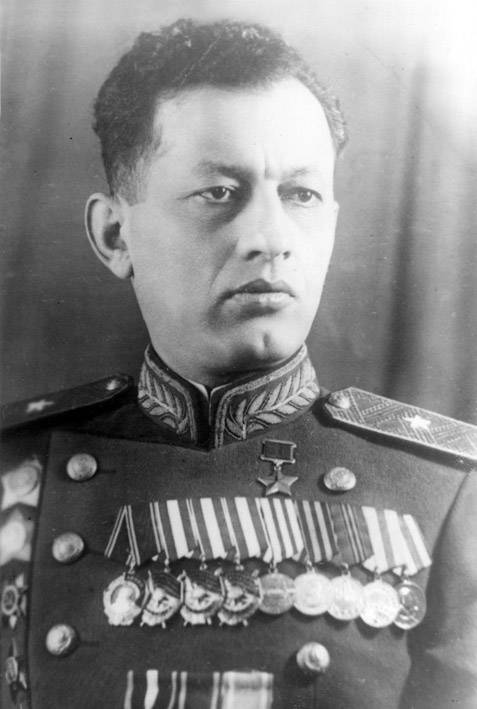
After the end of World War II, Hamazasp Babajanyan continued to build his army career and improve himself. In January, 1947, he was sent to study at the Higher Military Academy named after KE Voroshilov, after completing his studies in which he received regular assignments to the active army. In particular, in 1950, he became the commander of the 2 Guards Mechanized Army. And in August 1953, he was already lieutenant-general of tank forces. In 1956, he again had to practice his combat skills in practice, he took part in suppressing anti-Soviet demonstrations in Hungary, receiving another combat award - the Order of Kutuzov, I degree.
Further important milestones of his career were: appointment to the post of commander of the Odessa Military District in June 1959; the commander of the Military Academy of Armored Forces named after Marshal of the Soviet Union R. Ya. Malinovsky in September 1967; and finally, the pinnacle of a career — the post of chief of the tank forces of the Soviet Army and a member of the Military Council of the Ground Forces in May 1969. 29 April 1975, Amazasp Khachaturovich Babajanyan became the Chief Marshal of the armored forces, for all the existence in the Soviet Union, the title of “Chief Marshal” was received by all 4 artillerymen, 7 pilots and the whole 2 tanker.
Hamazasp Khachaturovich Babadzhanyan died in Moscow at the P.V. Mandryki hospital, it happened on November 1 of the year 1977. He died on 72-th year of life. The chief marshal of the armored troops with appropriate honors was buried in Moscow at the Novodevichy cemetery.
In honor of the famous Soviet military commander, streets in Yerevan and Odessa and a square in the North-Western administrative district of Moscow were named. His name is also a secondary school in Echmiadzin (Armenia). 23 May 2016, a monument dedicated to the Chief Marshal of the Armored Forces was solemnly opened in Yerevan. There is still a unit with which Babajanyan took Berlin. After the end of the war, the 11-th Guards Tank Corps went a long way; in June 1945, it was reorganized into the 11-th Guards Tank Division, and today it is the 11-th Guards Red Banner, Order of Suvorov, II degree, mechanized brigade, is the pride of the armed forces of the Republic of Belarus.
Based on materials from open sources

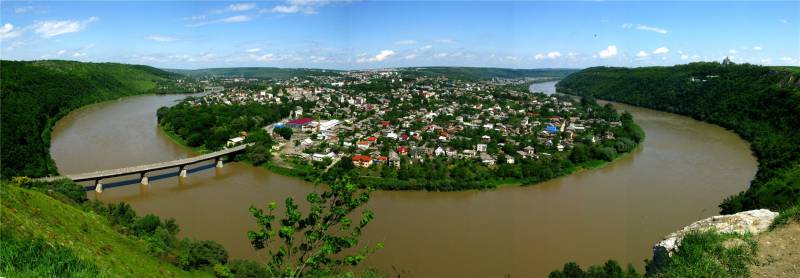
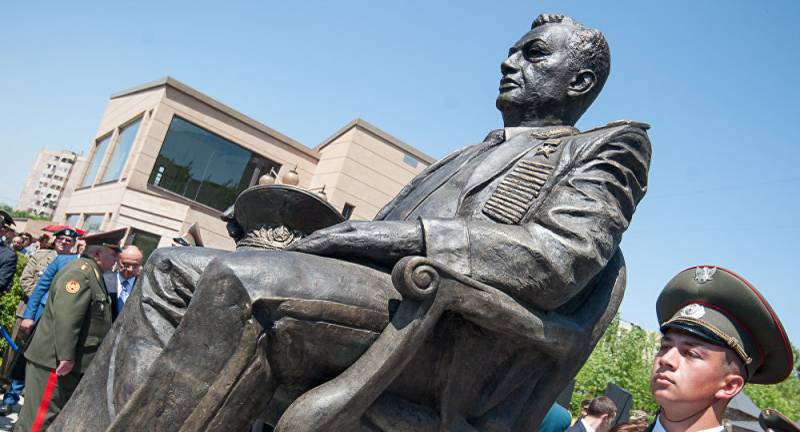
Information